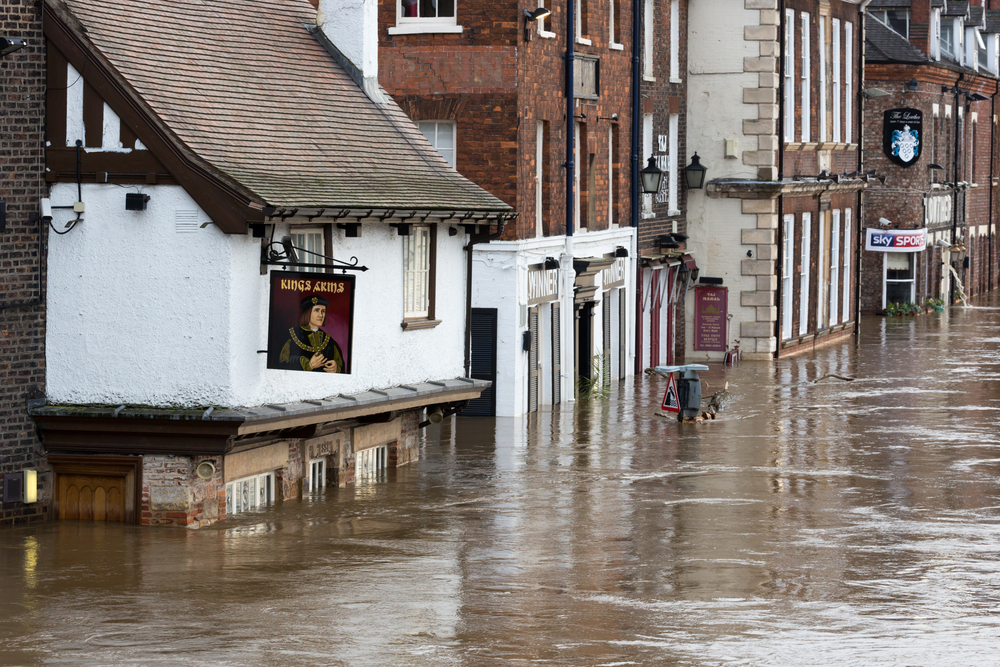There are all sorts of environmental risks that could affect the home you are buying. Robin Wells, Head of Sales & Marketing at Future Climate Info, explains the most common ones
 For many, a house is the investment of a lifetime. With so much at stake – both financially and emotionally – it’s crucial people are armed with all the information available about the property.
For many, a house is the investment of a lifetime. With so much at stake – both financially and emotionally – it’s crucial people are armed with all the information available about the property.
Knowing all the risks, seen and unseen, could save homebuyers significant emotional and financial strain further down the line.
But what are the risks that might not immediately meet the eye; the unseen conditions that could impact your home and livelihood in the future?
There are a number of key, potentially unseen risks that all homeowners should be aware of when investing in bricks and mortar that are often overlooked or ignored until it’s too late:
Flood risk
Since the high profile floods of recent years, flooding has become of particular worry to most homebuyers, especially in regions that are known as traditional flood plains. Future Climate Info’s (FCI) analysis found that one in seven homebuyers in 2016 and 2017 faced a potential flood risk, a figure that rises substantially in urban areas.
The key for homebuyers is to understand what ‘flood risk’ means. It’s not enough now to rely on past experience to predict which areas will flood and when. Just because a particular area has flooded previously, does not mean it will flood again. Similarly, just because an area has never flooded before does not mean it will not flood in the future.
Insurers set flood risk by probability of flooding in a certain time period. If a home is at high risk, it may have a one in ten-year chance of flooding. This means in any given year over a decade, there is a 10% chance there will be a flood. A low risk property might have a one in 500-year risk, so each year there is a 0.05% of flooding.
Ground instability and subsidence
Subsidence and sink holes might also arise in the process of buying a home, and their consequences can turn out to be catastrophic. Costly cracked foundations or homes even sliding into a hole can cost a homeowner dearly.
The risk of subsidence comes from a result of poor ground quality, foundations or historic mining sites under properties themselves. A recent study found that between January 2014 and October 2017 more than 250 sinkholes formed around Great Britain, at a rate of around one each week.
The study also found that 40% of these sinkholes are the result of historical mining activity, which has left holes and cavities liable to collapse. Mining operations historically extracting metal, chalk and coal are responsible for most sinkhole occurrences, and these took place all over the UK – not just in areas known for their mining past, such as the West Midlands and Yorkshire.
Rainfall is a key trigger in the formation of sinkholes across the UK, so as climate change produces more storms and record levels of rainfall, subsidence is becoming more common. Although it is not yet possible to accurately predict when a sinkhole will occur, with advances in data and risk modelling, it is now very possible to identify where sinkholes will occur, allowing those affected to mitigate the impact of ground collapse.
Contaminated land
Some homes may be sitting on land that has been contaminated in the past with chemicals and pollutants that could be dangerous. In fact, the government estimates that there could be as many as 100,000 potentially contaminated sites in the UK of up to 200,000 hectares.
Homeowners might be amazed to find out what was once under their feet. An old gas works, a long-gone petrol station, industrial rubbish dump from a long-razed factory – these things can all potentially require an environmental clean-up. Heavy metals and acids have often seeped into the soil, and could adversely affect people’s health.
In recent years, environmental permits and regulation have meant new properties are less likely to have been built on contaminated land, but the land upon which older buildings from the 19th and 20th centuries were built may not have been adequately cleaned or even been flagged as potentially contaminated.
It’s crucial for homeowners to understand what’s beneath their property’s foundations. Anyone planning on extending, rebuilding part of a property or even growing fruits and vegetables should be soil savvy.
Be informed to protect against risk
Homebuyers can find out whether their home is potentially at risk from any of these environmental issues by asking their solicitor to see their property’s environmental report.
Data will have been compiled and every home will have any risk of flood, subsidence, contamination and more outlined. And these reports aren’t necessarily overly technical – FCI’s reports are clear and concise, only a few pages, and use a colour-coded warning system to make risk easily identifiable.
From there, all homebuyers should be able to make an informed opinion as to whether further actions or insurance against any risk is necessary. Imminent risk of disaster is highly unlikely, but it’s always better to understand and be aware.




